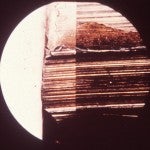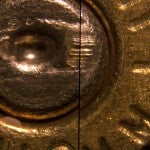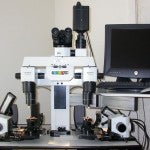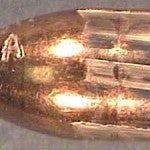The Firearm and Toolmark Section at the Rhode Island State Crime Laboratory examines, identifies and test fires firearms and also performs the microscopic comparisons of ammunition and ammunition components (projectiles, cartridge cases and shotshells) to determine if those items were fired from the same or different firearms.
The scientific basis behind firearms examination is the theory of toolmark identification. During the interaction of two objects, the harder object (the firearm or tool) may leave a mark on the softer object (ammunition components or other working surface). Using powerful microscopes, the firearm examiners examine and compare the toolmarks in order to form conclusions as to whether or not the ammunition components were fired from one or different firearms, or if a particular tool left a particular mark.
Firearm Examiners use the National Integrated Ballistic Information Network (NIBIN), which is a digital database of images of the markings left on cartridge cases by the firearm that discharged them. This system allows for the correlation of images to those previously entered by the RISCL and other NIBIN users and helps connect crimes that were otherwise unconnected.
 Another function of the Firearm Section is to perform serial number restorations. If a serial number on a firearm, or other item, is obliterated there is a chance the serial number can be recovered. A firearm examiner will use various methods and etching chemicals in a process that can reveal the obliterated number.
Another function of the Firearm Section is to perform serial number restorations. If a serial number on a firearm, or other item, is obliterated there is a chance the serial number can be recovered. A firearm examiner will use various methods and etching chemicals in a process that can reveal the obliterated number.
Firearm Examiners will also perform the examination and microscopic comparison of traditional toolmarks, such as those marks left on a lock by a pair of bolt cutters, or the marks left on phone lines by wire cutters.
Lastly, the approximate distance the muzzle of a firearm was from the victim when they were shot can sometimes be determined. An examiner will examine the victims clothing for burnt, partially burnt and unburnt gunpowder, as well as for lead (both particulate and vaporous). Using the suspect firearm, test shots will be made and both the evidence and test shot panels will be chemically treated to develop patterns that will be compared to determine the approximate distance.
 URI Homepage
URI Homepage









